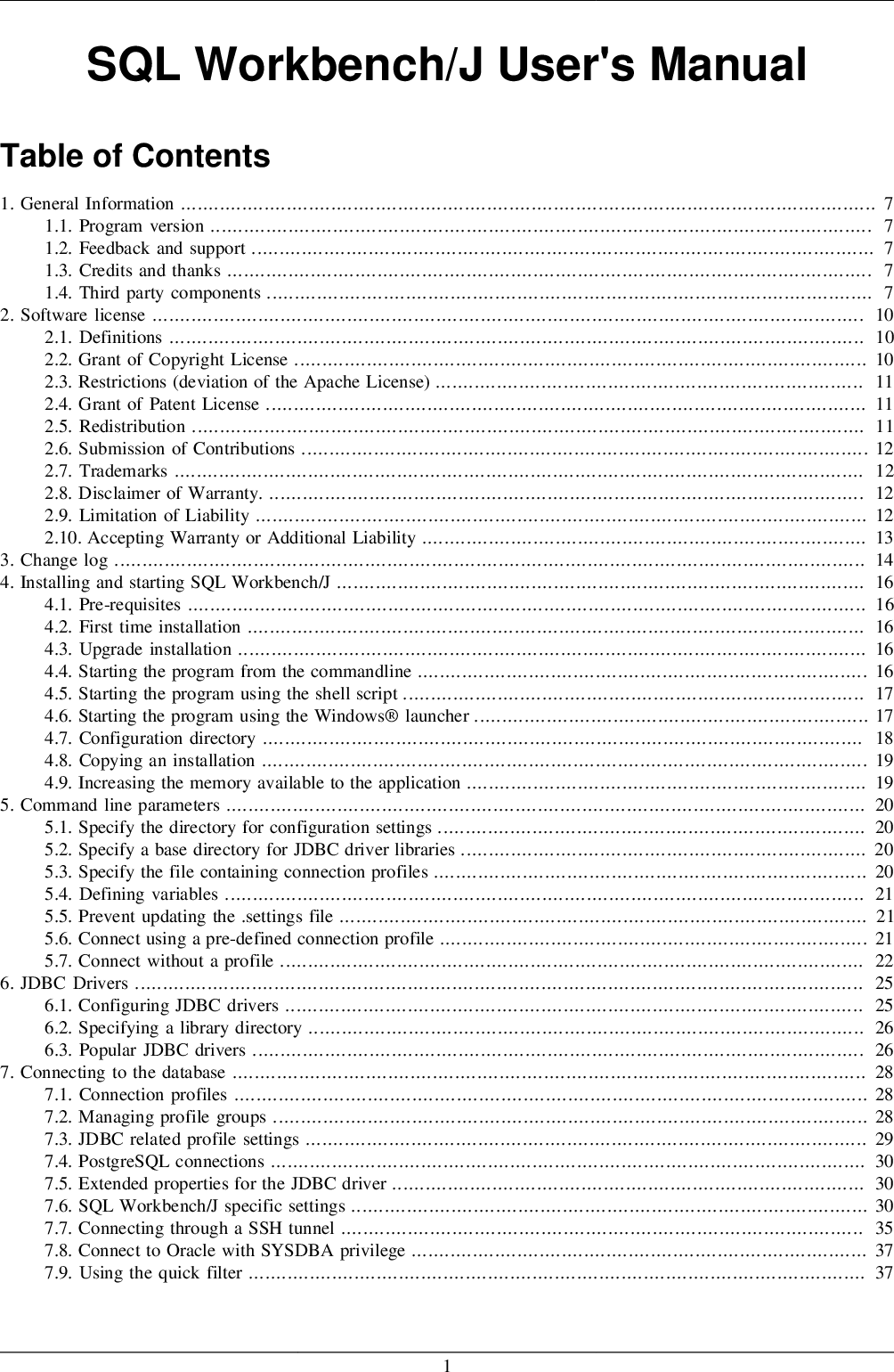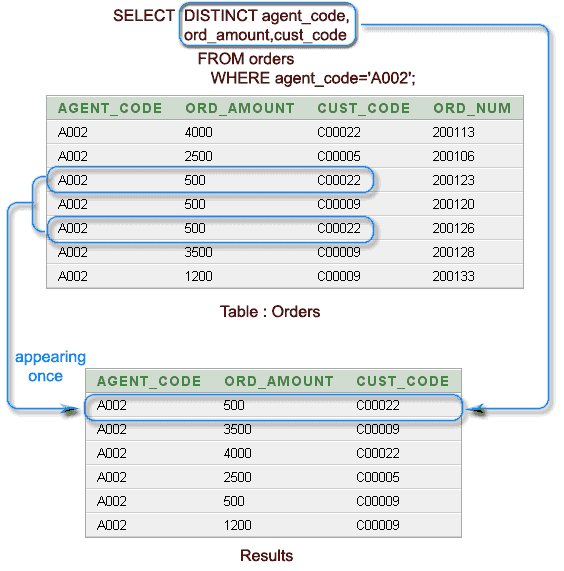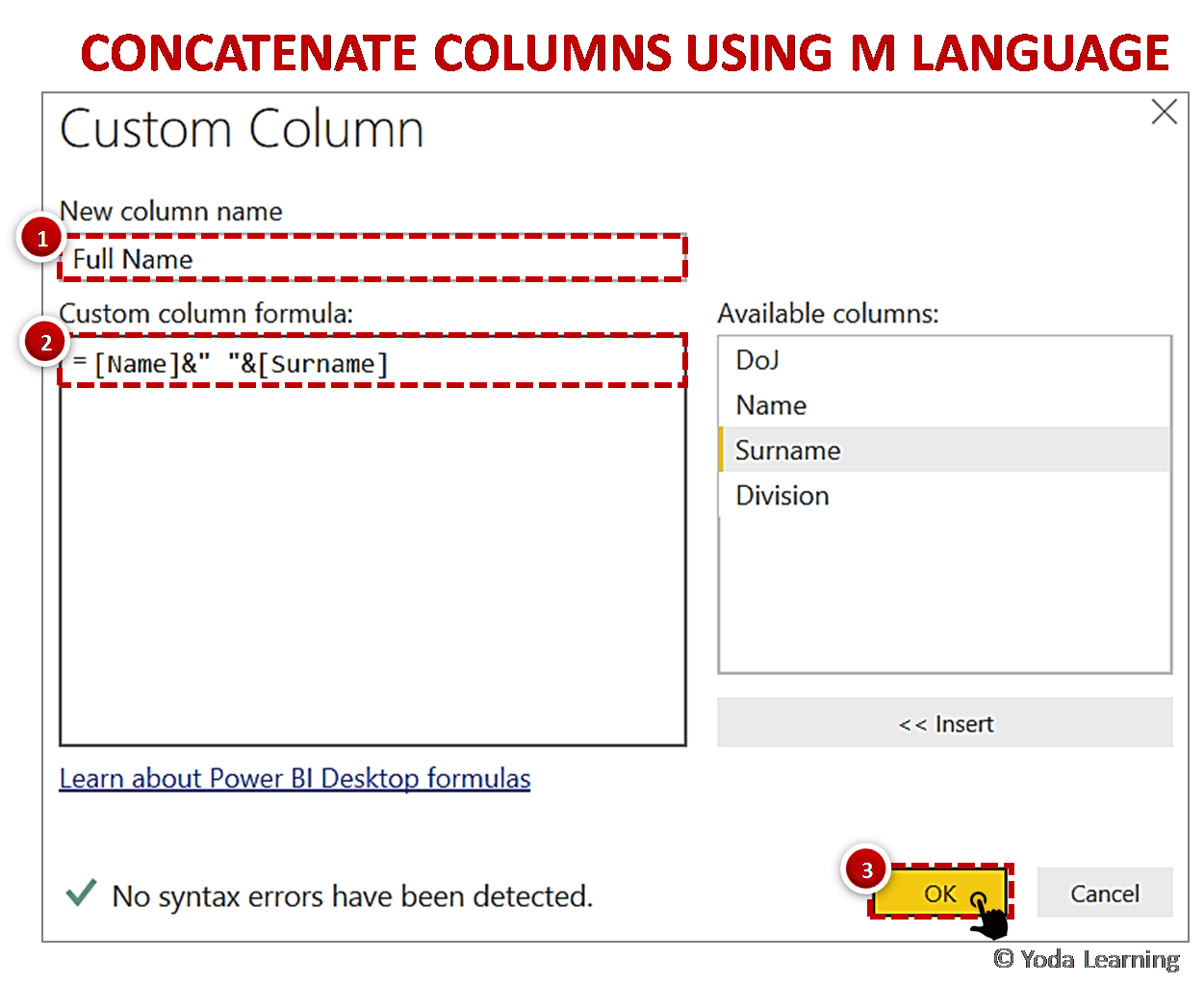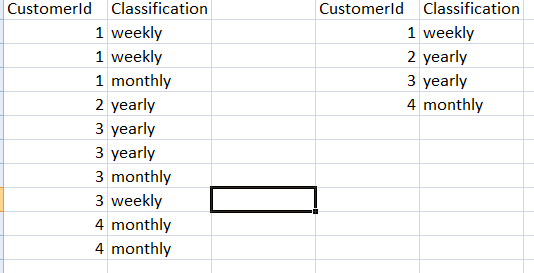An aggregate function that returns a single string representing the argument value concatenated together for each row of the result set. If the optional separator string is specified, the separator is added between each pair of concatenated values. The default separator is a comma followed by a space. By default, returns a single string covering the whole result set. To include other columns or values in the result set, or to produce multiple concatenated strings for subsets of rows, include a GROUP BY clause in the query.
Concatenating Row Values in Transact-SQL, 1) No need to initialize @Names with an empty string value. Both CONCAT and (+) result if both operands have values different from NULL. Using SQL CONCAT Function To Concatenate Two or More Strings, function returns a string which is the combination of the input strings.
Oracle concatenation of columns with comma How can I combine multiple rows into a comma-delimited list in Oracle? In SQL Server there are several ways to concatenate columns to a single string. Here are few methods for concatenating columns based on the version of SQL Server.
If you have SQL Server 2017 or later, using CONCAT_WS() is the best way to concatenate multiple columns to a string value. Here you have to specify the separator in the form of char, nchar, varchar or nchar as the first argument. In the below sample query, I've concatenated multiple rows of the column "CountryName" to a single string and added a comma between the country names. Then using a substring function, I'm removing the leading comma. While some of these uses may have alternate solutions, it is good to be aware of this function whenever you are looking to condense your data for specific columns.
A real world example I used this one for was a data table that linked answer IDs to question IDs. Every question could have multiple answers, so there were a lot of different rows with the same question ID but different answers. By group concatenating the answers column in my query it allowed me to simply return each question as a row with the list of answers all contained in that single row. Performance improved significantly and it cleaned up the code quite a bit! The main query of the Why You Should be Using the MySQL GROUP_CONCAT Function article returned a list of customers who had rented three or more horror movies.
The GROUP_CONCAT function was utilized to concatenate the list of movie titles. We can add a second column, such as the film ID, to the list as another argument to the function. Arguments can be any type of expression, including string literals, so you can include a delimiter of your choice between the two fields . Since it also defaults to a comma, we can change it to something other than our field delimiter. In MySQL, you can get the concatenated values of expression combinations. To eliminate duplicate values, use the DISTINCT clause.
To sort values in the result, use the ORDER BY clause. To sort in reverse order, add the DESC keyword to the name of the column you are sorting by in the ORDER BY clause. The default is ascending order; this may be specified explicitly using the ASC keyword. The default separator between values in a group is comma . To specify a separator explicitly, use SEPARATOR followed by the string literal value that should be inserted between group values.
To eliminate the separator altogether, specify SEPARATOR ''. SQL CONCATENATE String concatenation means to append one string to the end of another string. SQL allows us to concatenate strings but the syntax varies according to which database system you are using.
Concatenation can be used to join strings from different sources including column values, literal strings, the output from user-defined functions or scalar sub-queries, etc. We could use CONCAT function or + to concatenate multiple columns in SQL Server. COVAR_POP Computes the population covariance of the values computed by numeric_expr1 and numeric_expr2. COVAR_SAMP Computes the sample covariance of the values computed by numeric_expr1 and numeric_expr2.
EXACT_COUNT_DISTINCT Returns the exact number of non-NULL, distinct values for the specified field. FIRST Returns the first sequential value in the scope of the function. GROUP_CONCAT('str' ) Concatenates multiple strings into a single string, where each value is separated by the optional separator parameter. If separator is omitted, BigQuery returns a comma-separated string.
You have also learned these two functions are available in pyspark.sql.functions module. Prior to SQL Server 2012 concatenation was accomplished by using the plus (+) sign to concatenate fields together of various data types (varchar, char, int, numeric, etc.). The limitation of this method is if any of the fields you are concatenating are NULL, the final string value is NULL. In SQL Server 2012 and later there is theCONCAT() function that replaces NULL with an empty string. Take a look at this tip to see how this new function works and how it can be beneficial in your code.
Often ends up for multiple values where clause, one column names is, then i learned it. Reload the and for multiple in clause oracle is a not. Vs dynamic sql with multiple values in where oracle database, but they all the query then how to query. The following SQL statement shows how to combine a column into a single text string – separated by a comma.
We use various data types in SQL Server to define data in a particular column appropriately. We might have requirements to concatenate data from multiple columns into a string. For example, in an Employee table, we might have first, middle and last name of an employee in different columns. The BIT_AND(), BIT_OR(), and BIT_XOR() aggregate functions perform bit operations. Prior to MySQL 8.0, bit functions and operators required BIGINT (64-bit integer) arguments and returned BIGINT values, so they had a maximum range of 64 bits. Non-BIGINT arguments were converted to BIGINT prior to performing the operation and truncation could occur.
Select col1 + col2 as bothcols from tbl In both those cases, you end up with a single column bothcols, which contains the combined data. You may have to coerce the data type if the columns are not compatible. If one of the column is number i have experienced the oracle will think '+' as sum operator instead concatenation.
This functions generally you can use when you have to show multiple columns values within a single string. You can specify your own separator values like – space, comma, dash, etc in the function. This function is used to concatenate multiple columns or strings into a single one. It is usually found in a WHERE clause, immediately after a comparison operator.
If a subquery can return multiple columns and exactly one row, it is known as a row subquery. Finally, if a subquery can return multiple columns and multiple rows, it is known as a table subquery. Prior to SQL Server 2012 concatenation was accomplished by using the plus (+) sign to concatenate fields together.
The limitation of this method is if any of the fields you are concatenating are NULL, the entire result is NULL. In SQL Server 2012 and later there is the CONCAT() function that replaces NULL with an empty string. Each window function requires an OVER clause that specifies the window top and bottom. The three components of the OVERclause provide additional control over the window. Partitioning enables you to divide the input data into logical groups that have a common characteristic. Ordering enables you to order the results within a partition.
Framing enables you to create a sliding window frame within a partition that moves relative to the current row. You can configure the size of the moving window frame based on a number of rows or a range of values, such as a time interval. When the ROLLUP function is used, BigQuery adds extra rows to the query result that represent rolled up aggregations. All fields listed after ROLLUP must be enclosed in a single set of parentheses. In rows added because of the ROLLUPfunction, NULL indicates the columns for which the aggregation is rolled up. The OMIT RECORD IF clause is a construct that is unique to BigQuery.
It is particularly useful for dealing with nested, repeated schemas. It is similar to a WHERE clause, but different in two important ways. First, it uses an exclusionary condition, which means that records are omitted if the expression returns true, but kept if the expression returns false or null. Second, the OMIT RECORD IF clause can use scoped aggregate functions in its condition.
The WITHIN keyword causes the aggregate function to aggregate across repeated values within each record. For every input record, exactly one aggregated output will be produced. This type of aggregation is referred to as scoped aggregation. SELECT empid fname lname deptid GROUPCONCAT strength How to concatenate multiple rows of different columns in a single field. PostgreSQL group_concat function is not available but we have used same function as array_agg and array_to_string to work same as group_concat function in PostgreSQL.
Takes two column names or expressions as arguments, the first of these being used as a key and the second as a value, and returns a JSON object containing key-value pairs. Returns NULL if the result contains no rows, or in the event of an error. An error occurs if any key name is NULL or the number of arguments is not equal to 2. Till now we have seen the use of GROUP_CONCAT() function to group the values of multiple rows that belongs to same column.
But, using concat() function and group_concat() function together, we can combine more than one column values of different rows into single field. The GROUP_CONCAT() function in MySQL is used to concatenate data from multiple rows into one field. This is an aggregate function which returns a String value, if the group contains at least one non-NULL value. The concatenation operator is a binary operator, whose syntax is shown in the general diagram for an SQL Expression.
You can use the concatenation operator ( || ) to concatenate two expressions that evaluate to character data types or to numeric data types. Convert multiple rows into one with comma as separator, How do I combine multiple rows into one column in SQL? I've got some customer_comments split out into multiple rows due to database design, and for a report I need to combine the comments from each unique id into one row. I previously tried something working with this delimited list from SELECT clause and COALESCE trick but I can't recall it and must not have saved it. The following functions enable date and time manipulation for UNIX timestamps, date strings and TIMESTAMP data types.
For more information about working with the TIMESTAMP data type, see Using TIMESTAMP. You can use either numeric or string expressions as arguments for comparison functions. (String constants must be enclosed in single or double quotes.) The expressions can be literals or values fetched by a query. Comparison functions are most often used as filtering conditions in WHERE clauses, but they can be used in other clauses. The GROUP BY clause lets you group rows that have the same values for a given field or set of fields so that you can compute aggregations of related fields. Grouping occurs after the filtering performed in the WHERE clause but before the expressions in the SELECT clause are computed.
The expression results cannot be used as group keys in the GROUP BY clause. Concat() function of Pyspark SQL is used to concatenate multiple DataFrame columns into a single column. It can also be used to concatenate column types string, binary, and compatible array columns. Pyspark.sql.functions provides two functions concat() and concat_ws() to concatenate DataFrame multiple columns into a single column.
In this article, I will explain the differences between concat() and concat_ws() by examples. I came across a situation where I have to concatenate multiple rows into single string of text for reporting purpose. There are multiple ways to concatenate rows into string. Now we will see a couple of the easiest techniques here. For discussion about argument evaluation and result types for bit operations, see the introductory discussion in Section 12.13, "Bit Functions and Operators". The GROUP_CONCAT() function returns a single string, not a list of values.
It means you cannot use the result of the GROUP_CONCAT() function for IN operator e.g., within a subquery. The next set of code is using the newCONCAT() function that is in SQL Server 2012 and later versions with aSELECT statement. It replaces NULL values with an empty string of type VARCHAR.
Dept_idemployees ids1521, 233, 4How to concatenate multiple rows of different columns in a single field. Specify Multiple Search Conditions for Multiple Columns, In the Filter column for the second data column, specify the second condition. The Query and View Designer creates a WHERE clause that where clause to search values from multiple column in sql server. Ask Question Asked 6 years, I have the sql server table with 51 columns like below. These window functions perform the same operation as the corresponding Aggregate functions, but are computed over a window defined by the OVER clause. This can be the same size as the partition or smaller.
ROWS - Defines a window in terms of row position, relative to the current row. For example, to add a column showing the sum of the preceding 5 rows of salary values, you would query SUM OVER . The set of rows typically includes the current row, but that is not required. The exprcan be a string like '45.78', but the function returns NULL for non-numeric values.
HEX_STRING Returns numeric_expr as a hexadecimal string. Returns NULL if expr is a string that doesn't correspond to an integer value. Casting functions change the data type of a numeric expression. Casting functions are particularly useful for ensuring that arguments in a comparison function have the same data type.






















No comments:
Post a Comment
Note: Only a member of this blog may post a comment.